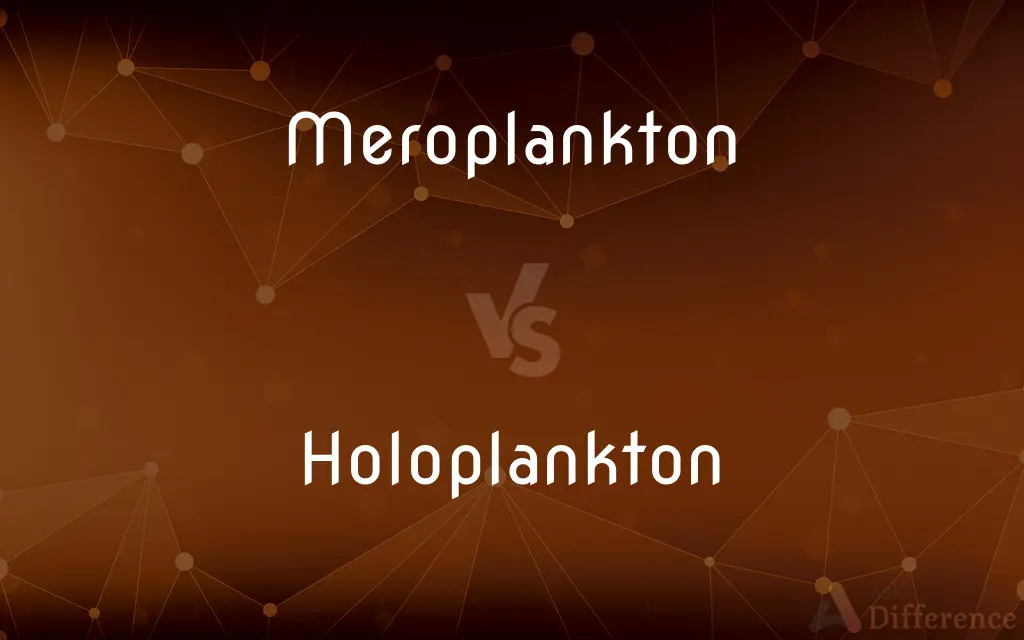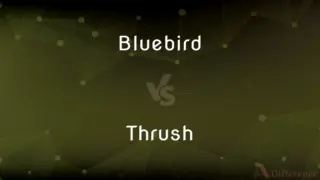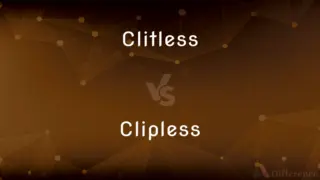Meroplankton vs. Holoplankton — What's the Difference?
By Tayyaba Rehman — Updated on October 31, 2023
Meroplankton are planktonic organisms that spend only part of their life in the planktonic phase; Holoplankton remain planktonic throughout their entire life.

Difference Between Meroplankton and Holoplankton
Table of Contents
ADVERTISEMENT
Key Differences
Meroplankton refers to organisms that only float freely in water columns for a segment of their life cycle. Typically, after a certain stage, they settle down to the bottom or become part of the nekton. Holoplankton, in contrast, spend their entire life cycle as plankton, floating with the currents.
Many marine animals, such as crabs, starfish, and some types of fish, start their lives as meroplankton before transforming and taking on a different role in the marine ecosystem. Holoplankton, however, remain consistent in their role, with species like krill and many types of phytoplankton never leaving the planktonic phase.
In studying marine biodiversity, meroplankton represent transitional organisms, showcasing the intricate connections within aquatic life stages. Holoplankton, meanwhile, symbolize the stability and consistency of the marine food chain, often serving as primary food sources for larger marine animals.
Ecologists often focus on meroplankton to understand recruitment patterns and population dynamics, given their transition from planktonic to benthic or nektonic stages. Holoplankton, being perpetually planktonic, offer insights into nutrient cycling, primary production, and marine food web structures.
Comparison Chart
Lifespan as Plankton
Temporary
Entire Life
ADVERTISEMENT
Examples
Crab larvae, Starfish larvae
Krill, Phytoplankton
Role in Marine Ecosystem
Transitional
Stable
Importance in Study
Recruitment & Population Dynamics
Nutrient Cycling & Primary Production
Relation to Currents
Drift temporarily
Continually drift
Compare with Definitions
Meroplankton
Temporary members of plankton.
The crab larvae, a type of meroplankton, will eventually settle to the seabed.
Holoplankton
Organisms that are planktonic throughout life.
Krill, a type of holoplankton, is a crucial food source for many marine animals.
Meroplankton
Organisms that float freely only during a life stage.
Many meroplankton species transition to a benthic lifestyle as they mature.
Holoplankton
Consistent drifters in marine currents.
Unlike other marine creatures, holoplankton never attach or settle to the seabed.
Meroplankton
Not always microscopic.
Some meroplankton, like fish larvae, are visible to the naked eye.
Holoplankton
Indicators of marine nutrient cycling.
The presence of certain holoplankton signifies healthy nutrient levels in the water.
Meroplankton
Key indicators of marine recruitment patterns.
Scientists study meroplankton to understand potential shifts in marine populations.
Holoplankton
Primary food sources in marine ecosystems.
Many fish species rely on the abundance of holoplankton for sustenance.
Meroplankton
Transitional organisms in marine ecosystems.
The presence of certain meroplankton indicates healthy reef recruitment.
Holoplankton
Essential in primary production.
Holoplankton, especially phytoplankton, play a pivotal role in marine photosynthesis.
Meroplankton
Meroplankton are a wide variety of aquatic organisms which have both planktonic and benthic stages in their life cycles. Much of the meroplankton consists of larval stages of larger organism.
Holoplankton
Holoplankton are organisms that are planktic (they live in the water column and cannot swim against a current) for their entire life cycle. Holoplankton can be contrasted with meroplankton, which are planktic organisms that spend part of their life cycle in the benthic zone.
Meroplankton
The collection of organisms in the plankton that spend only part of their life cycle, usually the larval or egg stage, drifting freely in the water.
Holoplankton
The collection of organisms that spend all stages of their life cycle as plankton, drifting freely in the water.
Meroplankton
(biology) Any organism that spends part of its life-cycle (especially the larval stage) as plankton
Holoplankton
(biology) Any organism that spends all of its life-cycle as plankton
Common Curiosities
Why are meroplankton important in marine studies?
Meroplankton are vital in understanding recruitment patterns and population dynamics in marine ecosystems.
Can meroplankton become harmful in large numbers?
In some instances, large concentrations of certain meroplankton can lead to imbalances in marine ecosystems.
What's a common example of meroplankton?
A common example of meroplankton is crab larvae.
Is it easy to differentiate between meroplankton and holoplankton?
Over a full life cycle, yes, but in a specific planktonic phase, it may require expert knowledge.
Are holoplankton producers or consumers?
Some holoplankton, like phytoplankton, are producers, while others like zooplankton are consumers.
Do all marine animals start as meroplankton?
No, only certain species begin their life as meroplankton.
What role does holoplankton play in the food chain?
Holoplankton often serve as primary food sources for larger marine animals.
How do meroplankton transition out of the planktonic phase?
They typically undergo metamorphosis or mature to a stage where they settle or adopt a different lifestyle.
Do holoplankton ever become nektonic?
No, holoplankton remain planktonic throughout their entire lives.
How long do organisms stay as meroplankton?
The time varies, but once they mature or metamorphose, they exit the planktonic phase.
How do currents affect holoplankton?
Currents continuously transport holoplankton, influencing their distribution and abundance.
Can meroplankton species affect fisheries?
Yes, because they can be indicators of future adult populations, which impacts fisheries.
Are all holoplankton microscopic?
While many are, not all holoplankton are microscopic. For instance, krill are visible and large in numbers.
Is there a size limit to being holoplankton?
No strict size limit, but holoplankton are typically small to allow for continuous drifting.
Why are holoplankton crucial in marine ecology?
Holoplankton play roles in nutrient cycling, primary production, and as primary food sources, maintaining marine ecological balance.
Share Your Discovery

Previous Comparison
Bluebird vs. Thrush
Next Comparison
Clitless vs. CliplessAuthor Spotlight
Written by
Tayyaba RehmanTayyaba Rehman is a distinguished writer, currently serving as a primary contributor to askdifference.com. As a researcher in semantics and etymology, Tayyaba's passion for the complexity of languages and their distinctions has found a perfect home on the platform. Tayyaba delves into the intricacies of language, distinguishing between commonly confused words and phrases, thereby providing clarity for readers worldwide.














































